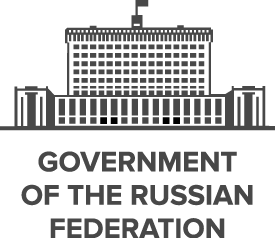Founded in the 12th century, the Principality of Muscovy was able to emerge from over 200 years of Mongol domination (13th-15th centuries) and to gradually conquer and absorb surrounding principalities. In the early 17th century, a new ROMANOV Dynasty continued this policy of expansion across Siberia to the Pacific. Under PETER I (ruled 1682-1725), hegemony was extended to the Baltic Sea and the country was renamed the Russian Empire. During the 19th century, more territorial acquisitions were made in Europe and Asia. Defeat in the Russo-Japanese War of 1904-05 contributed to the Revolution of 1905, which resulted in the formation of a parliament and other reforms. Repeated devastating defeats of the Russian army in World War I led to widespread rioting in the major cities of the Russian Empire and to the overthrow in 1917 of the imperial household. The communists under Vladimir LENIN seized power soon after and formed the USSR. The brutal rule of Iosif STALIN (1928-53) strengthened communist rule and Russian dominance of the Soviet Union at a cost of tens of millions of lives. After defeating Germany in World War II as part of an alliance with the US (1939-1945), the USSR expanded its territory and influence in Eastern Europe and emerged as a global power. The USSR was the principal adversary of the US during the Cold War (1947-1991). The Soviet economy and society stagnated in the decades following Stalin’s rule, until General Secretary Mikhail GORBACHEV (1985-91) introduced glasnost (openness) and perestroika (restructuring) in an attempt to modernize communism, but his initiatives inadvertently released forces that by December 1991 splintered the USSR into Russia and 14 other independent republics.
Following economic and political turmoil during President Boris YELTSIN's term (1991-99), Russia shifted toward a centralized authoritarian state under the leadership of President Vladimir PUTIN (2000-2008, 2012-present) in which the regime seeks to legitimize its rule through managed elections, populist appeals, a foreign policy focused on enhancing the country's geopolitical influence, and commodity-based economic growth. Russia faces a largely subdued rebel movement in Chechnya and some other surrounding regions, although violence still occurs throughout the North Caucasus.
Russia is a semi-presidential federation.
Members:
Resources
Displaying 786 - 790 of 1046Regional Law No. 196-ZKO “On maximum land area allotted for subsistence farming”.
This Regional Law establishes that total land area allotted for subsistence farming that can be owned or managed under other terms and conditions by citizens performing subsistence farming shall amount to 15 ha.
Regional Law No. 141-4-ZKO “On land-use planning projects.
This Regional Law establishes the modalities for elaboration of land-use planning project containing land-use planning scheme, mapping of boundaries of land areas with graphic presentation in accordance with Urban Code, urban vegetation and urban recreational forested areas, objects of cultural heritage, and potable water supply areas and sources.
Amended by: Regional Law No. 67-6-ZKO amending Regional Law No. 141-4-ZKO “On land-use planning projects. (2016-01-27)
Regional Law No. 167-ZKO “On public land management”.
This Regional Law regulates the issues of ownership, land tenure and management of public land pertaining to the property of the Regional Administration. Regional Administration shall nominate authorized state regional institution for carrying out the aforesaid functions and decision-making concerning transfer of regional public land under jurisdiction of the Russian Federation or local government.
Regional Law No. 315-ZKO “On transfer of land from one category to another”.
This Regional Law regulates transfer of land from one category to another, or classification of land plots by categories, including classification as agricultural land, municipal land or private land ownership. Request for transfer of land plot from one category to another must contain the following data: (a) land area; (b) cadastre number of land plot; (c) location of land plot; (d) actual land category and destination category; (e) substantiation of transfer request; and (f) land rights.
Regional Law No. 76-ZKO “On maximum areas of agricultural land allotted for agricultural purposes”.
This Regional Law establishes maximum land areas that can be allotted in ownership to citizens out of stock of public land for farming, gardening, horticulture, stockbreeding and suburban housing construction. Allocation of the aforesaid land parcels to citizens shall be performed by state executive body or local government. Maximum land areas shall be set forth as follows: (a) for farming – up to 150 ha of agricultural land; (b) for gardening and horticulture - up to 0,4 ha; (c) for stockbreeding – up to 10 ha; and (d) for suburban housing construction – up to 0,5 ha.


